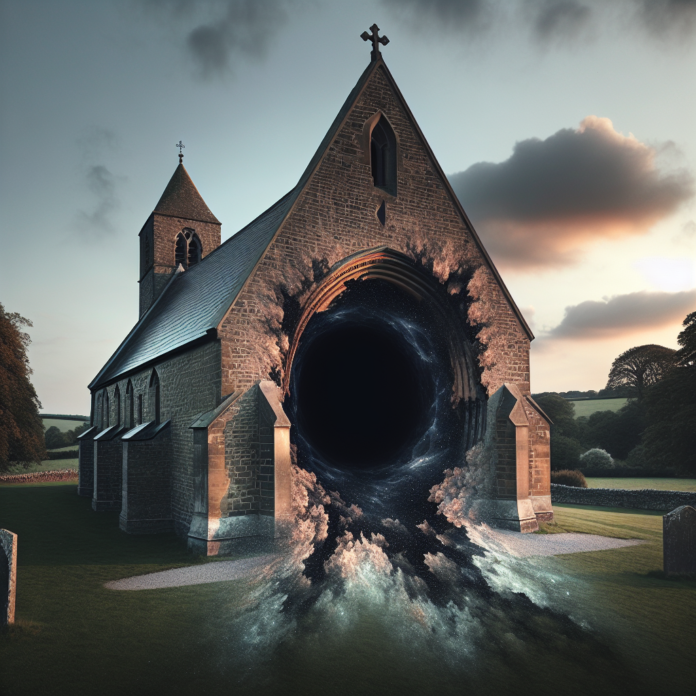The Ripple Effect: How Sedevacantism Disrupts the Church’s Mission
In the vast and varied landscape of Catholicism, few movements have stirred more fervent debate and concern within the Church than sedevacantism. This ideological stance, which posits that recent popes are illegitimate and that the papal seat has been effectively "vacant" since the death of Pope Pius XII in 1958, presents not just a theological conundrum but also a significant hindrance to the Church’s broader mission of unity, progress, and compassion.
At its core, sedevacantism represents a radical form of traditionalism, one that clings tenaciously to a perception of the Church that arguably never existed in its pure or simplistic form. It often views the reforms of the Second Vatican Council (1962-1965) as a betrayal of the true faith, and implicitly or explicitly fosters a rejection of modernity and the Church’s adaptive capacity.
The Second Vatican Council marked a seismic shift in the Church’s approach to the modern world, aligning itself more closely with progressive values of openness, dialogue, and inclusivity. Under the leadership of Pope John XXIII and Pope Paul VI, the Council sought to address the challenges of a rapidly changing world by embracing new theological perspectives and encouraging pastoral flexibility. The Council also promoted a more active participation of the laity and a movement towards cultural and liturgical diversity, which many consider vital for the Church’s relevance in the 20th and 21st centuries.
However, the uncompromising stance of sedevacantists threatens to undermine these achievements. By rejecting the authority of recent pontiffs, especially those who have championed progressive reforms, sedevacantism fosters division and discord. This factionalism erodes the Church’s ability to function as a unified body dedicated to spreading the message of Christ to all corners of the world.
One need not look far to see the cracks forming. The insistence on the supremacy of the Tridentine Latin Mass, for instance, often serves not as a celebration of liturgical heritage but as a rallying cry for those opposed to Church reforms meant to make the liturgy accessible to the world’s diverse cultural landscape. Pope Francis, much like his predecessors, has emphasized the importance of unity over divisiveness. His papacy has been marked by a pastoral approach that values mercy, a call for environmental stewardship, and open dialogue with other faiths and social movements. Sedevacantist rhetoric runs counter to these ideals, threatening not only the internal cohesion of Catholicism but also its global mission of compassion and engagement.
The consequences of this division are not merely internal. By creating fractures within the Church, sedevacantism hampers its ability to speak with a coherent and credible voice on the global stage. In an era when religious institutions are called upon to address critical issues such as poverty, inequality, and climate change, the distraction of internal schisms limits the Church’s capacity to influence and guide.
Moreover, this ideological rigidity often alienates those on the fringes of faith, those who might otherwise find solace and belonging within the Church’s embrace. In a world increasingly dominated by narratives of exclusion and isolation, the Church’s mission to be a beacon of hope and inclusion becomes all the more essential. Yet, the divisiveness of sedevacantism pushes further away those who seek a Church that speaks to the realities of contemporary life, one that cherishes diversity and change as expressions of divine creativity.
History has repeatedly demonstrated that the resilience and vitality of the Church lie in its capacity to adapt and evolve. From the early councils that established foundational doctrines to the reforms of the Second Vatican Council, the Church has a long tradition of renewal in response to the needs of its time. Even the challenges posed by the Protestant Reformation were met with a Catholic reformation, a testament to the Church’s ability to engage constructively with its critiques, rather than retreat into insularity.
Pope Francis’ ongoing efforts to address the needs of the marginalized, to engage with issues of social justice, and to encourage a holistic view of human dignity are deeply rooted in the spirit of the Second Vatican Council. His progressive vision is a continuity of a Church that, at its best, has never shied away from the hard questions of its age.
In contrast, the retreat into the past advocated by sedevacantists not only risks sidelining the Church in contemporary discourse but also undermines its foundational mission to be the universal sacrament of salvation. As the Church looks to the future, it requires a vision that balances reverence for tradition with an openness to the new, a balance that imbues ancient truths with new life and relevance.
The challenge for the Church is not simply to oppose the misleading doctrines of sedevacantism but to embody a vision that is both faithful and dynamic, one that resonates with the deepest human yearnings for justice, peace, and community. By doing so, it will ensure its ongoing mission and, indeed, its very survival in a world desperate for authentic messages of hope and transformation.
